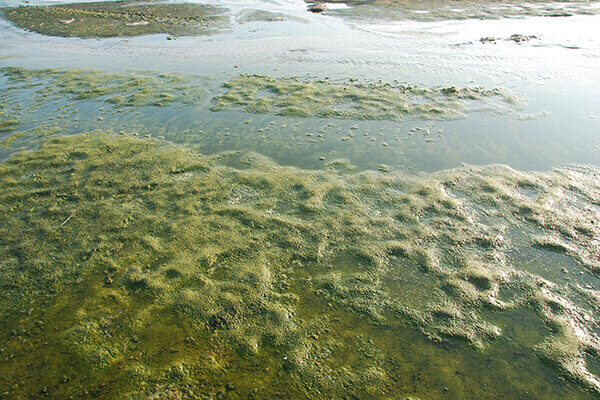Why You Should Consider American Arbor’s Aquatic Weed Control Service
Vegetation management, or aquatic weed control service, is absolutely key for those in the Kalamazoo, MI area. Our team at American Arbor helps you to clean up waterbodies on your commercial or residential property as well as manage any weed growth that can occur.
There are many different ways to manage and monitor your aquatic weeds, including manually, mechanically, chemically, biologically, and culturally. Our team is prepared to talk you through our methods and explain the pros and the cons of each one. At American Arbor, we offer weed control, weed removal, and tree care along your water bodies.
As always, our goal is to work in the most effective, environmentally safe way. We take our work extremely seriously and understand your need for a clean, beautiful property.
4. Prevent The Growth of Desirable Vegetation
- Steal nutrients from plants you want;
- Inhibit growth or “drown” other plants
- Spread extremely quickly
When you have too many weeds in your water body, there is more of a chance that the desirable vegetation won’t grow. Weeds tend to take over and suppress other types of growth – either by stealing nutrients, sinking, or eliminating sunlight to the plants. Weeds do tend to be stronger than plants that you actually want.
According to the Department of Environmental Protection in New York State, the most common weeds that take over include the most common of which are Eurasian watermilfoil, water chestnut, curly leafed pondweed and fanwort.
Even worse, when weeds take over, the chemistry of the water and even the ground around the water can change. This is something that can take a long time to fix – you need to handle it as soon as possible and in the best way. When you work with a professional to eliminate those weeds, you will give your body of water the best chance to survive and thrive.
3. Rhizomatous Roots
- Can make traversing the waterway dangerous
- Hard to remove once there
- Can create or inhibit weed growth
According to The Spruce, “Rhizomes are modified stems running underground horizontally. They strike new roots out of their nodes, down into the soil. They also shoot new stems up to the surface out of their nodes. This rhizome activity represents a form of plant reproduction. These underground plant parts also store nutrients.”
When you have weeds that are extremely thick and taking over, you probably have Rhizomatous Roots without even knowing it. This can be dangerous, especially if you plan on using your body of water for swimming, boating or fishing. People could get stuck, fishing will be almost impossible, and you have to be careful about anything that you put into the water.
While Rhizomatous Roots aren’t always bad, they are something you need to consider. To remove them, you need professional equipment that can cut through the muck and gunk.
2. Floating Mats Can Form
- Kills native species
- Clogs waterways
- Can cling to sides, making edges unsafe
When weeds band together, sometimes just by getting tangled and other times from the roots forming together, you sometimes get what we called “floating mats.” These are large sections of weeds that do float together and move around your body of water, particularly when there is a lot of wind or if you have rushing water. At times, they can get big enough to look like floating islands – but even if they are much smaller, they can cause problems. When they form along the banks of the water body, people can sometimes think that they are solid land and when they step out, can fall into the water.
Even worse, as they float they can clog up your waterways, particularly when they run into other mats and form huge masses. The good news about floating mats is that they are probably the easier things to eliminate from your water body.
The most common examples of floating mats are Duckweed, water hyacinth, mosquito fern and watermeal, according to Clemson.
1. Will Eventually Take Over
- Can completely take over the water
- The more there is, the harder it is to eliminate
- Makes water access difficult
One of the scariest things for any body of water is when it gets covered completely by weeds. Not only does it make the water still, in some cases, but it can change the biology of the water as well. Sitting water tends to go stagnant, which means that anything that lives in the water can die. While it does take some time for stagnation to occur, it can happen in smaller areas.
When the entire surface of a water body is covered in weeds, there is a lack of oxygen that gets into the water. This is a huge problem, according to the University of Kentucky, which says: “Oxygen depletion occurs when plants die and decompose. Photosynthetic production of oxygen ceases, and the bacteria, which break down the plant material, use oxygen in their own respiration. Fish kills in summer are frequently caused by die-offs of algae blooms. Fish kills in winter occur when snow accumulates on ice cover. Light is blocked thus preventing photosynthesis by any living plants or algae. Decomposition of plants that died in the fall causes further oxygen depletion. Fish kills also can be caused by insecticide runoff, ammonia runoff from feedlots, and diseases.”
Aquatic weeds can be quite a pain, especially if you have been overgrown with them. It is also something that you really cannot control on your own – you need professional help.
We can help you take care of your aquatic weeds – and much more. Our team is primed, ready, and insured to help you make your yard or property as beautiful as possible.
Give us a call today at (269) 216-6811 and we can set up a time to visit you and your weeds.


